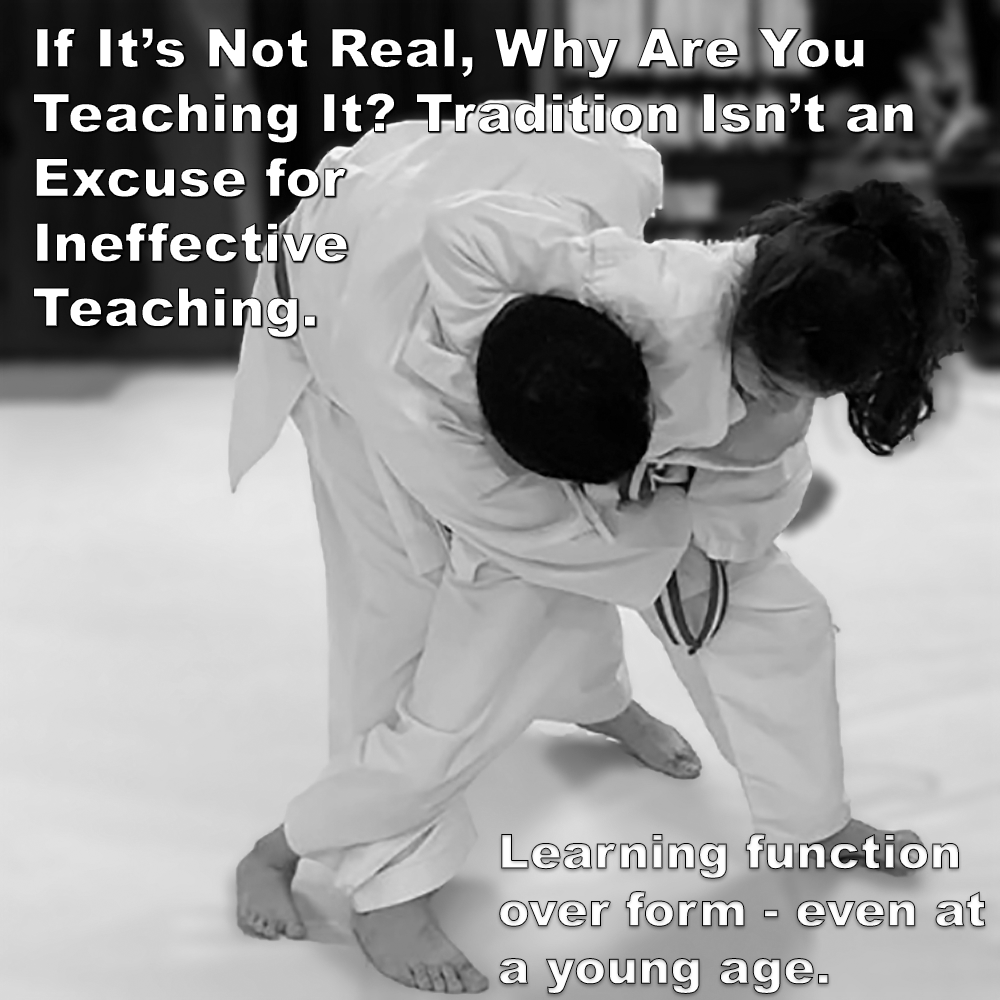
Approx 2 minute 40 second read)
Kata, kihon, and two-person drills are part of the language of karate. But none of these should be practiced in isolation or merely for tradition. They should all have a connection – each part serving a purpose, forming a blueprint for learning how to deal with violence. If it doesn’t – especially in terms of real-world function – it doesn’t belong.
.
Partner drills, in my opinion, should not be stylized sequences of block-punch-kick. They should be based on common assaults and pressure-tested concepts.
.
Nothing should be practiced just for the sake of tradition. Even with children and beginners – and let me be clear, because too many people still miss this – you don’t have to start by teaching them how to fight. If your goal is self-protection, there’s far more to address before it ever gets physical.
.
Every drill, every lesson, should be connected to that purpose. If it doesn’t fit, if it doesn’t work in the real world, then why is it still in your curriculum – if that’s your goal?
.
When people think of self-defense, they often imagine just fighting. For beginners – and especially children – self-defense starts long before anything physical. It begins with awareness, confidence, and the ability to make smart choices to avoid danger in the first place.
.
That means teaching them to notice what’s going on around them, to understand what feels safe or not, and to know when and how to get help.
.
Children can learn to recognize when something isn’t right – like if someone makes them uncomfortable, asks them to keep a secret, or tries to get them alone. They need to know these feelings matter – and that it’s okay to speak up or walk away.
.
A strong voice, saying “Stop!” or “No!”, and staying near safe adults – these are simple, effective tools. So is knowing how to get away, where to go, and when to avoid a situation entirely. These are real-world skills – and they can be taught through calm, age-appropriate role-play and clear, practical guidance.
.
All of this is far more useful than teaching a child a fighting drill they’ll never use – or worse, one that gives them a false sense of security.
.
Real self-protection is about staying safe. Teaching children how to avoid the fight is far more valuable than having them perform unrealistic drills that wouldn’t hold up under pressure.
.
And yes – functional drills can start simple, but they evolve. When taught properly, they progress through realistic sequences that reflect real threats.
.
In short, we’re not trying to preserve karate in a glass case. We’re trying to make it work for the goals we’ve chosen. That includes understanding the original work of the pioneers – while also recognizing that change is not a threat to tradition, but a part of it.
.
The foundation of practical training is life protection – even beginners and children can start to learn the basics of that. And when the time is right, we introduce pre-arranged drills that reflect the realities of self-defense: proper distancing, realistic timing, and sound tactics.
.
We’re here to give our students tools that actually keep them safe, right? That means constantly looking at what we teach and asking, ‘Does this truly serve their self-protection needs?’ For me, it’s about learning function over form – even at a young age.
.
It’s about getting the core understanding in there, so they can actually use it to navigate potentially dangerous situations, not just look pretty doing a drill with no real-world value.
.
This isn’t about throwing tradition out the window, but about making sure that it makes sense in the face of real-world threats. To focus on what genuinely contributes to their safety and well-being, right from the start. That’s not just good karate – it’s responsible teaching.
.
.
Written by Adam Carter
Photo Credit: two young students from the Shuri Dojo
